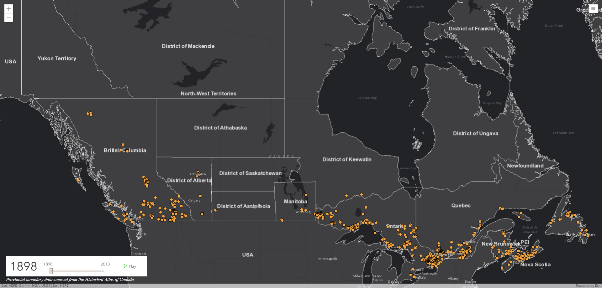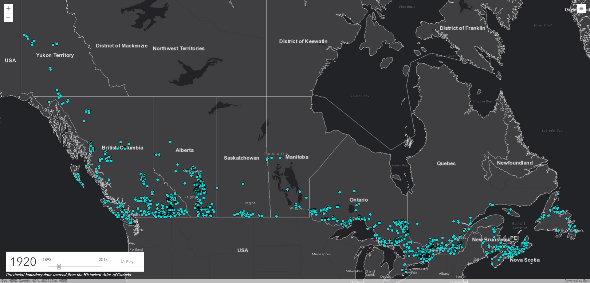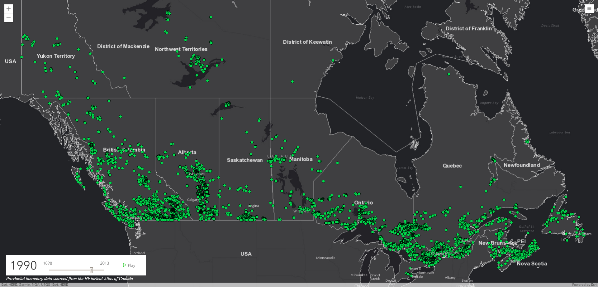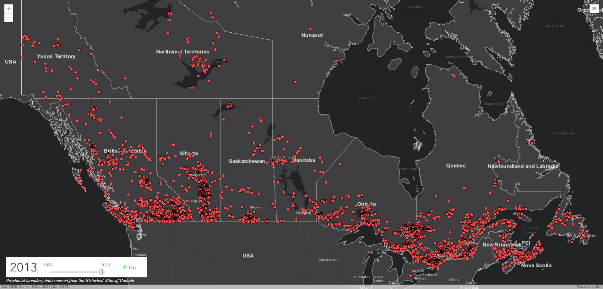Canada is a huge country. I have been the passenger from the east-to-west coast and through the Yukon (and Alaska). It is about 5800 km from Halifax to Vancouver, and 3000 km from Saskatoon to Dawson City. Also, I have driven myself from Saskatchewan through to southern Ontario a couple of times at 3000ish km each way. So big… so much rock… so many lakes…. so gorgeous. On every trip I wonder where the rock came from to build the Trans Canada and major highways, why towns exist, and how long they have been there. Anyone who has driven across Canada knows there is LOTS of time to think because towns can be far apart and sometimes even the radio reception fails.
Those drives, along with becoming an instructor for mining option classes at the University of Saskatchewan, inspired me to learn more about where the valuable rock deposits are in Canada. I went through several geological databases in Canada and compiled a long list of mines and quarries in Canada. This is what the first version of the data looked like plotted as dots. In 1898, there were no mines in Saskatchewan. As significant event In history occurred on “1885, November 8 - The CP special train arrives in Port Moody at Pacific Tidewater, the first railway train ever to travel across Canada from sea to sea.” Twenty years after that first train, Saskatchewan and Albert joined Canada. Thirty-five years after that first train, mining of coal was prevalent in Saskatchewan.
 |
 |
Moving to modern day, the maps in 1990 and 2013 show mines throughout the north. From the Canada Aviation and Space Museum website, the A.E.A. Silver Dart became “the first powered aircraft to fly in Canada when it took off at Baddeck, Nova Scotia on February 23, 1909, piloted by Canadian aviation pioneer John Alexander Douglas McCurdy”. It was “designed and built by Alexander Graham Bell and members of the Aerial Experimental Association (A.E.A.)”. The development of airplanes made it possible to access destinations previously only reachable by boat and foot.
Airplanes are significant tools for Canadians. These 4 maps imply that there have been far reaching industrial implications of this technology. I know that each time I drive across the country, I wonder if I should have taken a plane. But there are still a lot of drives left in me because each town is unique and there are so many stories to be found from them. There is so much beauty to be experienced.
 |
 |

